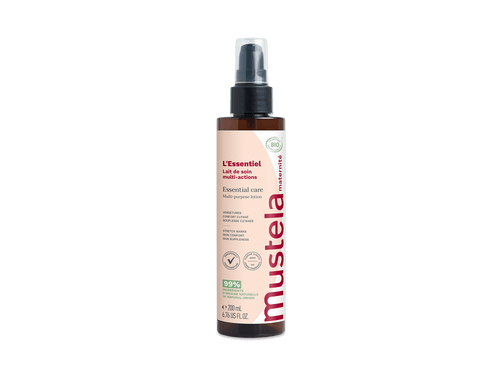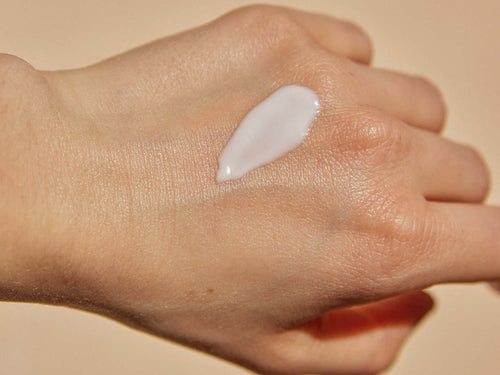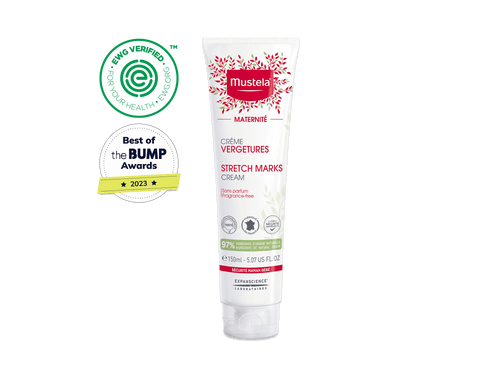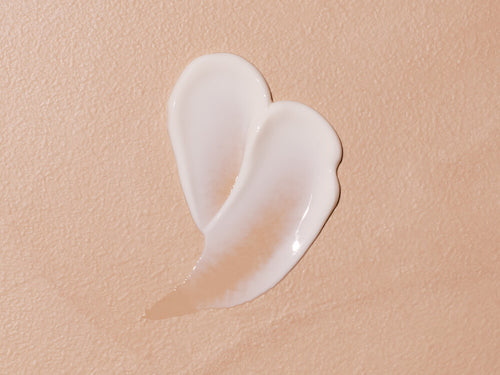Breastfeeding can be such a rewarding experience, but it can also be challenging. Breast pumping, leaking, and all-night feeding sessions are all part of the process. And with exhaustion and a little one to feed, the last thing you want to discover is a clogged milk duct.
Whether you’re a first-time mom or you’ve been down this road before, you’ve probably reached out to other moms or researched online to find the information you need.
In this article, we’ll address what causes a clogged milk duct, how you can get rid of it, and ways to get back to your regular feeding routine.
Let’s get started.
Symptoms Of A Clogged Milk Duct

To understand what a clogged milk duct is, you have to look at the basic structure of how milk is transported through the breast to feed your little one.
While we won’t get too technical, the tubes that carry milk to your nipple area are called milk ducts, and sometimes these ducts don’t drain properly, or they get blocked.
It’s usually possible to tell if you have a clogged duct by just looking at your breasts. For example, if you see that you have a red and irritated area around your breasts that feels tender or dense to the touch, it’s a good indication you have a blockage.
Here are a few more symptoms that you may also experience:
- A lump that appears on one area of the breast
- Swelling or pain near the lump
- Some discomfort in the area, which subsides after nursing
- A blister at the opening of your nipple
- Over time, the lump may move from one place of the breast to another
- A temporary decrease in milk supply in the affected breast
- Thickened milk that looks like strings or grains when you pump
These symptoms usually affect one breast (the breast with the clogged duct), and they can leave it feeling tender and painful.
When you’re a breastfeeding mom who needs to feed her little one and take care of herself as well, this is the last thing you want to experience!
Don’t worry, we’ll share tips and tricks for how to get rid of this painful condition ASAP. But before we focus on how to treat and even prevent this from occurring, we need to discuss what causes it in the first place.
What Causes This Clogging?

In a nutshell, a clogged milk duct is caused by the breast not fully draining while nursing. Many things can contribute to this, including:
- Tight clothing (e.g., sports bras, tight tops, or even an infant carrier that is too tight)
- Missed feeding sessions
- The same feeding position over and over
- Not enough feeding time
- An improper latch
- Infrequent feeding sessions
Regarding infrequent feeding sessions, it’s important to note that your milk supply is affected by many different factors, including the number of times you breastfeed.
This means that the more you nurse your little one, the more your body is likely to produce milk. You can think of it as nature’s way of ensuring you can supply your baby with sufficient milk for their growing body.
But what happens when you suddenly don’t feed as often as you used to? Or when your little one is sick and doesn’t consume as much milk as usual? Likely, your breasts won’t drain entirely while nursing, and this can contribute to a clogged milk duct.
However, sometimes clogged ducts can be due to how you nurse your little one. For instance, if your baby prefers to feed on one breast over another, the less-used breast may experience clogging.
In addition, stress, fatigue, an unbalanced diet, and cracked skin on the nipples can also cause you to develop clogged milk ducts.
If you have a challenge with cracked skin on your nipples, breastfeeding can be incredibly painful and uncomfortable. And, as a result, you may avoid nursing your little one with that breast to allow it to heal.
But keep in mind that doing this may cause clogging because the breast will be used less frequently and not get drained as it needs to.
To prevent and treat cracked nipples, try our Nursing Comfort Balm. It is packed with nourishing properties that will help soothe and moisturize your skin after every feed. It’s also 100% plant-based and entirely safe for both you and your baby.
Now that you understand the symptoms of a clogged duct and what causes it, how exactly can you get rid of it at home?
How To Treat A Clogged Milk Duct

While it might feel uncomfortable, the good news is that most clogged ducts tend to subside after a couple of days, and you can usually treat the symptoms at home.
Your best (and fastest) plan to get rid of clogging is by regularly nursing your little one. Doing this and emptying the affected breast after each feeding session can really help.
How will you know you’ve “emptied” your breast?
The best way to tell if your breast is empty is simply by feeling it. Your breast should produce little to no milk when you squeeze it, and it will also feel a lot lighter than before you started nursing.
If your little one struggles to drain your breast (i.e., they get full quickly), you can also use a breast pump to help.
In addition to ensuring that you drain your breast after every feeding session, here are a few more tips to treat clogged milk ducts at home:
- Massage the clogged area while nursing or pumping. You can use our Baby Massage Oil With Avocado, starting just above the clog and pushing down toward your nipple.
- Start your feeding sessions with the affected breast to increase the chances of it getting drained.
- Apply heat to your breasts for about 20 minutes. You can do this with a hot shower or by using a heating pad.
- Soak your breasts in a warm bath. Our Organic Bath And Body Gift Set is perfect for this. The cleansing gel cleanses and nourishes your skin, while the hydrating cream helps prevent dryness and promotes soft, healthy skin.
- Nurse in a position that puts your baby under your breasts. This can allow gravity to drain your breasts.
- Avoid wearing fitted bras and tight tops.
The above tips can help unclog your ducts in a couple of days. But how can you prevent it from occurring again? Let’s take a look.
When To See A Doctor
As highlighted above, a clogged milk duct can usually be treated at home and should subside within a couple of days. However, if this doesn’t happen, you may need to contact your healthcare provider.
Sometimes clogged ducts develop into an infection called mastitis. Symptoms of this condition include a fever or chills and a lump with redness around it.
If your healthcare provider confirms that you have mastitis, they may put you on antibiotics to clear the infection.
Note: Don’t hesitate to reach out to your healthcare provider if you notice any ongoing symptoms. In this case, it might be something more serious, so an ultrasound or mammogram may be required.
How To Prevent A Clogged Milk Duct
The first step is to review your feeding routine. For example, if you miss a feeding session or it is delayed, your breasts won’t get drained as needed, which can lead to clogging. This is why it’s important to breastfeed or pump at regular intervals.
While feeding schedules for little ones can vary, experts recommend that breastfeeding moms nurse or pump eight to 12 times a day, especially during the early days of breastfeeding.
In some cases, you may also need help from a lactation specialist to see if your baby’s latching technique contributes to the clogged ducts.
Additionally, it’s essential to continue breastfeeding if you notice a blockage, as stopping might make the problem worse. Keep nursing, especially on the affected breast, and alternate feeding positions and sides frequently.
One Day At A Time

A clogged milk duct can be painful, uncomfortable, and frustrating for both you and your baby. The good news is that it’s usually treatable at home and often subsides after a few days.
If you follow the above tips and find that the issue persists for more than a couple of days, you may want to reach out to your doctor or lactation specialist to find out what you can change in your routine to help manage or prevent it.
To make breastfeeding a little more comfortable, you can also use our Nursing Comfort Balm. It’s fragrance-free and made of 100% plant-based ingredients with nourishing properties to leave your skin feeling soothed and moisturized after every feed.
Breastfeeding is a journey that will naturally come with its ups and downs. So, while you’re taking care of your little one’s needs each day, remember to give yourself the love and patience you need as well. You’ve got this, mama!












